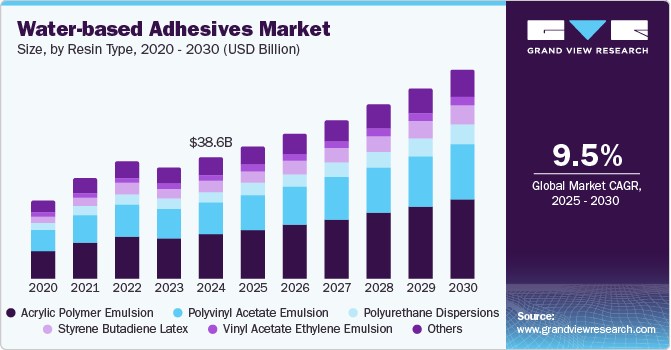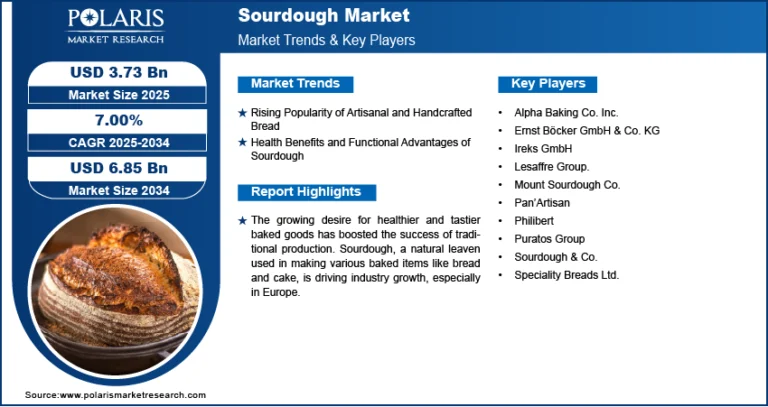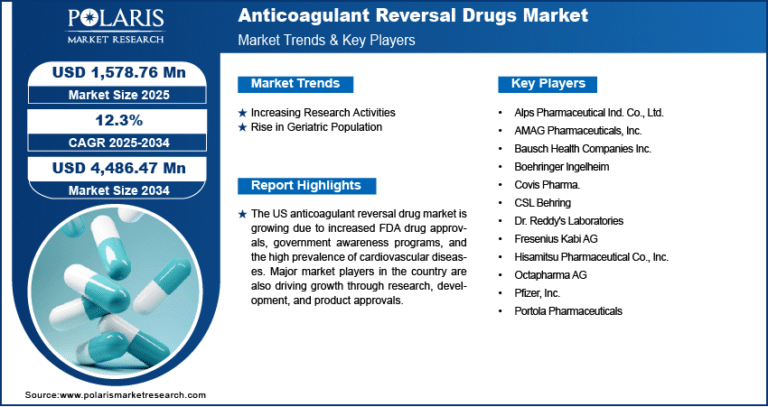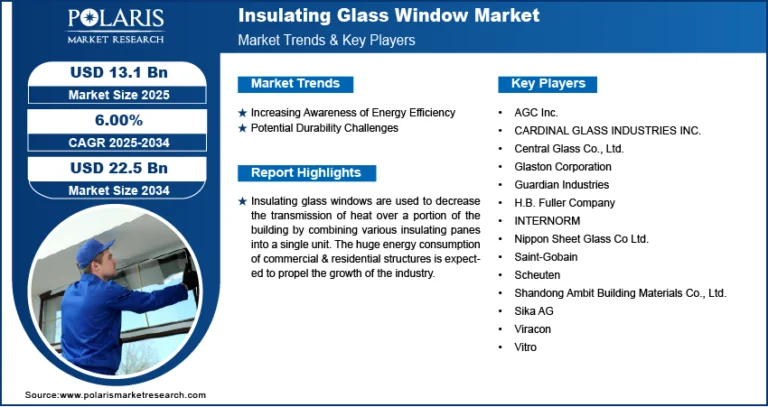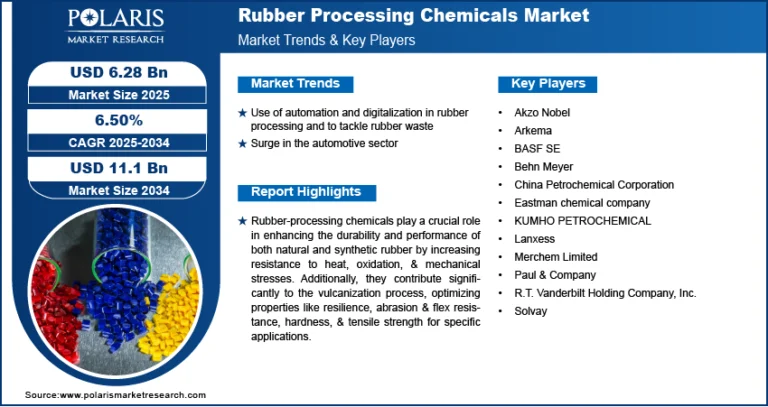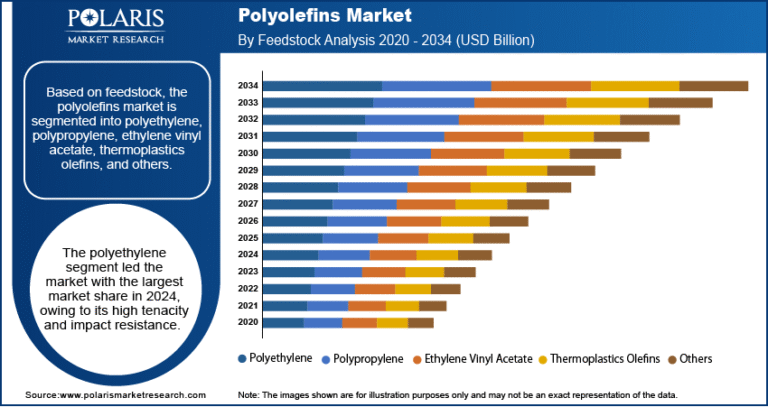Transparent Plastic Market is expected to attain a value of USD 258.03 billion by 2034, with a CAGR of 6.20%.
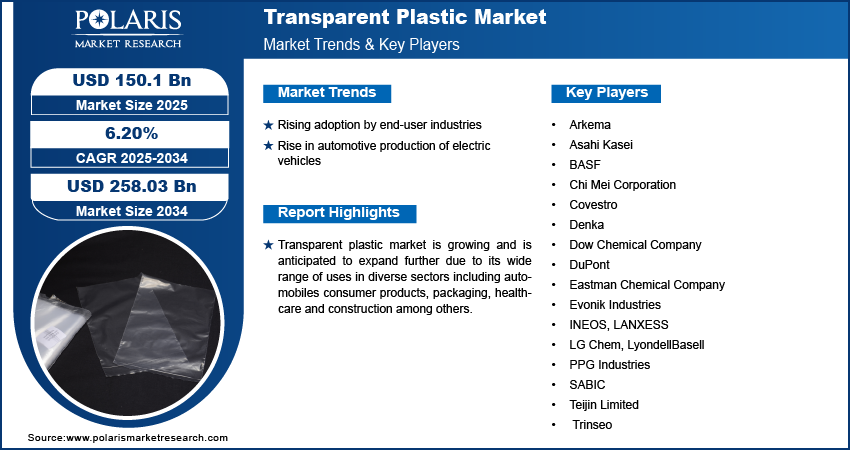
The global transparent plastic market was valued at USD 144 billion in 2024 and is projected to grow at a CAGR of 6.20% from 2025 to 2034.
Market Trends & Insights:
- Boom in Sustainable & Recyclable Plastics:
Growing environmental concerns are driving R&D into bio-based and recyclable transparent plastics, especially in food and beverage and consumer goods packaging. - Lightweighting in Automotive & Aerospace:
Transparent plastics are replacing traditional glass and metal parts to reduce vehicle weight, improve fuel efficiency, and enhance design flexibility. - Growth of Transparent Flexible Electronics:
Expansion in smart displays, touch panels, and flexible electronic components is boosting demand for optically clear, conductive plastic substrates. - Healthcare & Medical Device Expansion:
Transparent plastics with high chemical resistance and clarity are increasingly used in diagnostic devices, containers, and surgical instruments. - Architectural and Interior Applications:
Use of transparent plastics in skylights, partition walls, and decorative elements is growing due to their impact resistance and design flexibility.
Market Size & Forecast
Market size value in 2025 USD – 150.1 billion
Revenue forecast in 2034 USD – 258.03 billion
CAGR – 6.20% from 2025 – 2034
Request for Free Sample:
Market Overview:
The Transparent Plastic Market is expanding rapidly due to increasing demand across packaging, automotive, electronics, construction, and medical sectors. Transparent plastics are favored for their lightweight properties, clarity, durability, and versatility in manufacturing. Common types include Polycarbonate (PC), Polymethyl Methacrylate (PMMA), Polyethylene Terephthalate (PET), and Polystyrene (PS).
Market Growth Drivers:
- Rising Packaging Demand in FMCG and Food Sectors:
Clear plastic packaging enhances product visibility, consumer appeal, and hygiene, driving significant market uptake. - Urbanization and Infrastructure Development:
Modern construction projects favor transparent plastic sheets and panels for aesthetic and functional purposes. - Electronics Miniaturization and Innovation:
Compact, transparent components are essential in mobile devices, wearables, and optical fibers. - Increased Demand for Lightweight Materials:
Transportation industries (automotive, aviation) are increasingly replacing glass and metal with transparent plastics to improve energy efficiency. - Versatile Processing and Cost-Effectiveness:
Transparent plastics are easy to mold and cost-effective compared to glass or other clear alternatives, boosting adoption in various sectors.
Market Challenges:
- Environmental Impact & Disposal Issues:
The non-biodegradable nature of many Transparent Plastic contributes to pollution, prompting regulatory scrutiny and consumer pushback. - Volatile Raw Material Prices:
Fluctuating petroleum-based input prices can impact profit margins and production stability. - Performance Limitations Under Extreme Conditions:
Some transparent plastics may degrade or discolor under prolonged UV exposure or high heat, limiting their use in outdoor applications. - Stringent Regulatory Standards:
Compliance with food safety, medical, and environmental regulations across regions can slow down product approvals and international trade. - Recycling Infrastructure Gaps:
Inadequate recycling systems, especially in developing economies, hamper the circular economy potential of transparent plastics.

